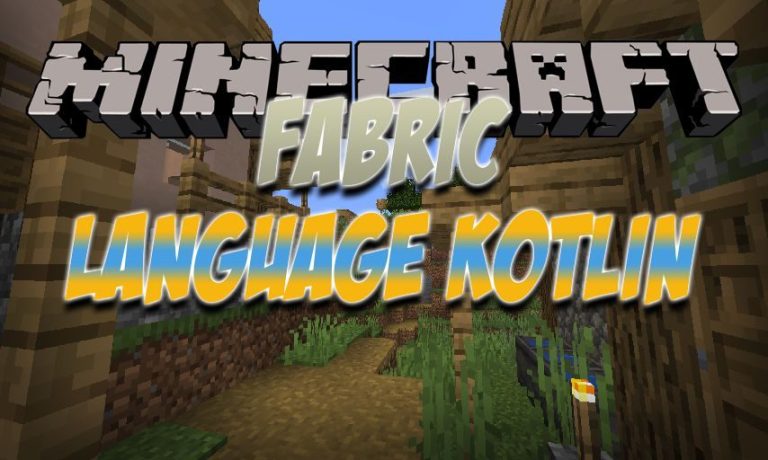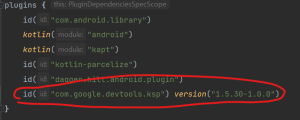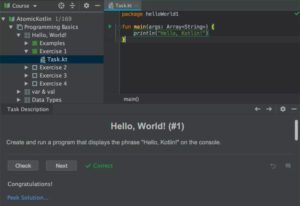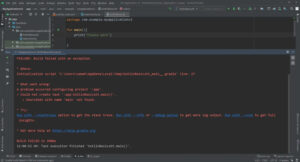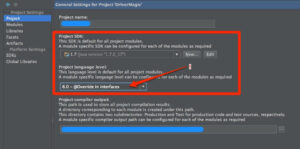Fabric is a lightweight and fast modding platform for Minecraft, designed to simplify the creation and management of mods. Fabric provides a robust API that allows mod developers to add new features and functionality to the game. Kotlin, on the other hand, is a modern programming language that is known for its simplicity, expressiveness, and conciseness. Combining the power of Kotlin with the ease of use of the Fabric API allows for the creation of high-quality Minecraft mods with ease. In this blog, we will explore the Kotlin Fabric API and its features.
Getting Started with Kotlin Fabric API
Before we dive into the Kotlin Fabric API, let’s first discuss how to set up a development environment for Minecraft modding using Fabric. Here are the steps:
- Download and install the latest version of Java Development Kit (JDK) on your computer.
- Download and install the Minecraft launcher from the official Minecraft website.
- Download and install the Fabric loader from the Fabric website.
- Create a new folder for your mod project.
- Open the folder and create a new file called “build.gradle” and add the following code:
plugins {
id 'fabric-loom'
id 'kotlin'
}
group 'com.example'
version '1.0-SNAPSHOT'
repositories {
maven { url 'https://maven.fabricmc.net/' }
mavenCentral()
}
dependencies {
minecraft 'net.fabricmc:fabric-loader:0.11.0'
minecraft 'net.fabricmc:fabric-api:0.11.0+build.366-1.17'
modImplementation 'org.jetbrains.kotlin:kotlin-stdlib:1.5.10'
}
- Open the folder in your favorite code editor and create a new Kotlin class.
- Start coding your mod using the Kotlin Fabric API.
Kotlin Fabric API Features
The Kotlin Fabric API provides a wide range of features and functionality that can be used to create mods for Minecraft. Here are some of the most important features of the Kotlin Fabric API:
- Block and Item Creation
The Kotlin Fabric API provides a simple and intuitive way to create new blocks and items for Minecraft. To create a new block, you can use the following code:
val myBlock = Block(FabricBlockSettings.of(Material.STONE).hardness(1.0f))
Registry.register(Registry.BLOCK, Identifier("mymod", "my_block"), myBlock)
This code creates a new block with a stone material and a hardness of 1.0. The block is then registered in the game’s block registry with the name “mymod:my_block”. Similarly, you can create a new item using the following code:
val myItem = Item(FabricItemSettings().group(ItemGroup.MISC))
Registry.register(Registry.ITEM, Identifier("mymod", "my_item"), myItem)
This code creates a new item and registers it in the game’s item registry with the name “mymod:my_item”.
- Custom Recipes
The Kotlin Fabric API also provides a way to create custom crafting recipes for Minecraft. You can use the following code to create a new crafting recipe:
val myRecipe = ShapedRecipe(Identifier("mymod", "my_recipe"), myItem, 1, 1,
DefaultedList.copyOf(Ingredient.EMPTY, Ingredient.ofItems(Items.IRON_INGOT)))
RecipeSerializer.register(myRecipe)
This code creates a new shaped recipe that requires one iron ingot to craft the “my_item” item.
- Custom Entities
The Kotlin Fabric API allows you to create custom entities
Creating and Editing Custom Entities with Kotlin Fabric API
Entities are a fundamental part of Minecraft, representing everything from mobs and animals to projectiles and items. The Kotlin Fabric API provides a straightforward way to create and edit custom entities for Minecraft. In this section, we will cover the basics of entity creation and editing using the Kotlin Fabric API.
Creating a Custom Entity
To create a custom entity in Minecraft, you need to define its characteristics, such as its size, shape, texture, behavior, and animations. Here’s an example of how to create a custom entity using the Kotlin Fabric API:
class MyEntity(entityType: EntityType<MyEntity>, world: World) : MobEntity(entityType, world) {
companion object {
val ENTITY_TYPE = FabricEntityTypeBuilder.create<MyEntity>(SpawnGroup.CREATURE) { entityType: EntityType<MyEntity>, world: World -> MyEntity(entityType, world) }
.dimensions(EntityDimensions.fixed(0.6f, 1.95f))
.build()
}
init {
experiencePoints = 5
}
override fun tick() {
super.tick()
// Update entity behavior
}
override fun initGoals() {
// Define entity goals
}
override fun getAnimation() = 0
override fun playStepSound(pos: BlockPos?, block: BlockState?) {
// Play entity step sound
}
}
In this code, we define a custom entity called MyEntity that extends MobEntity. We use a companion object to define the entity’s characteristics, such as its type, spawn group, dimensions, and behavior. We also override some of the entity’s methods to define its behavior and animations.
Once you have defined your custom entity, you need to register it with the game’s entity registry using the following code:
Registry.register(Registry.ENTITY_TYPE, Identifier("mymod", "my_entity"), MyEntity.ENTITY_TYPE)
This code registers the MyEntity type with the game’s entity registry with the name “mymod:my_entity”.
Editing an Existing Entity
In addition to creating new entities, you can also modify the behavior and properties of existing entities using the Kotlin Fabric API. Here’s an example of how to modify the properties of an existing entity using the API:
class MyEntityMixin(entityType: EntityType<*>, world: World) : LivingEntity(entityType, world) {
// Define entity behavior
}
fun modifyExistingEntity() {
MixinEnvironment.getDefaultEnvironment().addTransformer { className: String?, classTransformedName: String?, classBytes: ByteArray? ->
when (classTransformedName) {
"net.minecraft.entity.LivingEntity" -> MyEntityMixin::class.java.name
else -> classTransformedName
}
}
}
In this code, we define a mixin class MyEntityMixin that extends LivingEntity and modifies its behavior. We then use the Mixin library to transform the existing LivingEntity class into our MyEntityMixin class at runtime.
To apply this transformation, you need to call the modifyExistingEntity() function somewhere in your mod’s code. This function registers the mixin transformer with the Mixin environment, which applies it to the game’s entity classes.
Conclusion
Creating and editing custom entities is an essential part of Minecraft modding. The Kotlin Fabric API provides a simple and powerful way to create and modify entities using the Kotlin programming language. With the knowledge gained in this guide, you should be able to create and modify entities with ease and bring new life to your Minecraft mods.

